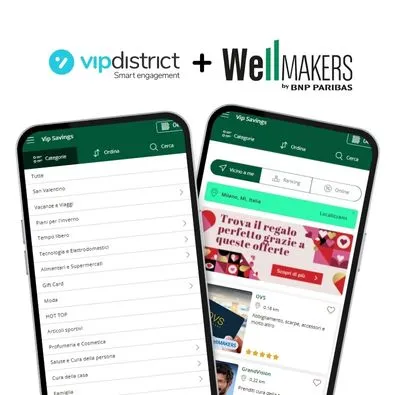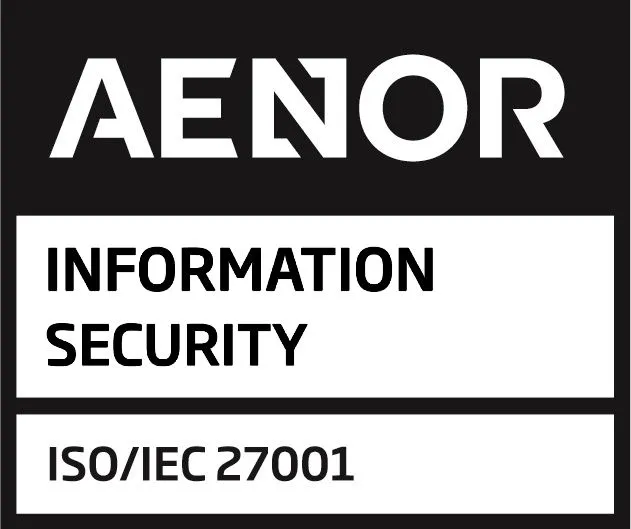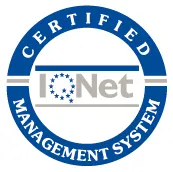
They say that happiness is not in the destination but in the path that leads to it. Y is that life is nothing more than a journey. A journey with different stages, with its difficulties its difficulties, its challenges and its satisfactions.
Transposed to the world of work, the relationship between employee and employer follows the same dynamic. It is a journey that begins as soon as we respond to a job offer (or maybe even before) and continues beyond the day we leave. We call this journey the employee journey.
Table of Contents
What is the employee journey?
The employee journey – also known as the employee journey or employee cycle – refers to the journey that an employee makes throughout his or her time at a company. It is a temporal but, above all, emotional space that captures all the experiences, interactions, situations, sensations, and moments of truth that the employee experiences along the journey, which, like any good adventure, is full of ups and downs.
As with many other HR concepts, the employee journey is a concept inspired – some would say ‘stolen’ – from marketing. Specifically, the customer journey. This refers to all those moments of a customer’s relationship with a brand and its products over time, experiences that help to create a certain emotional attachment -positive, negative or neutral-, and which can be positive, negative or neutral, negative or neutral-, and which include, among other milestones, the attention of the salesperson, the act of the act of purchase itself or interactions with the after-sales service.
In theory, the employee journey begins during the recruitment and selection process and ends with the exit process. However, companies that know how to work the employee journey well are able to extend the relationship beyond these boundaries.
Benefits of taking care of the employee journey
A study by the Society for HR Management (SHRM) concludes that 69% of employees who experience their onboarding process positively are more likely to stay with the company for at least three years. This is just one example of how taking care of the employee cycle, in any of its phases, brings very significant benefits for companies. These include:
- Increased loyalty power. Companies that know how to design a good employee journey employee journey for their employees are characterised by low turnover rates. And this may be the No. 1 reason for companies to adopt an employee journey, as every employee departure avoided saves time, money and resources in recruitment, training and adaptation.
- Better climate. The working environment and relations with bosses and colleagues also gain in quality when the The working environment and relations with bosses and colleagues also improve in quality when the different stages of this journey are experienced smoothly and in accordance with employees’ expectations. and in accordance with employees’ expectations.
- Increased commitment. The level of commitment to the company’s purpose and objectives, and productivity, are strengthened through a successful employee journey.
- Better employer branding. Finally, the employee journey has a direct effect on employer branding. In fact, both concepts feed back into each other and form a virtuous circle from which both the organisation and the employees themselves benefit.
- Less stress of new hires. When someone starts a new job, one of the most stressful things is having no idea what is expected of them or where to start. Having a clear map of their journey in the company not only gives new employees more peace of mind but also tells them where they are on their journey.
- More structure and peace of mind for HR. A well-defined employee journey not only helps the employee, it also makes life much easier for HR. It makes it possible to standardise processes, anticipate possible frictions and provide faster and more personalised responses at each stage. It also makes it easier to monitor the development of each person, helps to detect leakage points and improves decision-making. In short: less improvisation, more clarity and fluency in the work.
Stages of the employee journey
A typical employee travel scheme could consist of the following stages:
- Prior knowledge and attraction. As we mentioned earlier, companies that do this well are able to plant the seeds of their employer brand long before the prospective employee even considers working for them, and some companies are able to do this even before the prospective employee is of legal working age. Some companies are able to do this even before that potential candidate is of legal working age. How do they do it? With a powerful employer branding strategy they know how to convey the value of working in the company to these people, when they are still in their student stage.
- Recruitment. This is the phase in which the employee sees a job offer of interest and decides to apply for it. The experience of this process is special because it is the first real contact with the company. It includes the digital experience of sending the application, the agility of the process, its complexity or the proactivity of the company in of the company in providing feedback.
- Selection. We come to another delicate moment: the selection interviews. These can be face-to-face or virtual, and they are not only the candidates being evaluated; the interviewers are also being critically assessed and, through them, the company they represent.
- Onboarding. Once the candidate has been selected, it is time to join the company and take their first steps in the company as a fully-fledged employee. This is one of the most impactful moments in the employee’s career. It is a moment full of excitement but also of doubts and fears that the company needs to alleviate for the new employee. The and colleagues is key during this phase. A well-done onboarding also ensures that new employees adapt more quickly. That means fewer ‘lost’ days and faster time to value. It can also be the key to a successful journey within the organisation.
- Professional development and continuous training. More than a localised phase, this is a continuum that continues throughout the employee’s entire career in the organisation and is key to increasing their satisfaction and loyalty. The professional who joins a company cannot (and does not want to) be the same as the one who leaves it. They need to feel that they are progressing, learning, and improving. And they need to feel that their employer cares about that development and provides them with the necessary tools to achieve it.
- Recognition and well-being. To embark on a journey, one must be motivated, challenged to do better and above all, be well and happy. It is also the task of companies to look for different ways to provide this to employees. Taking care of employees with physical activities, emotional and/or psychological support, providing a good work-life balance, rewarding and incentivising for achievements and milestones are some of the means to keep their levels of motivation and commitment high. It is also advisable to develop a strategic recognition plan to reinforce individual motivation and performance.
- Disengagement. Departure is another of those moments of truth in which a company is at stake. An unavoidable moment that can be hard, sad, conflictive or joyful, but which, whatever the case, the company needs to know how to manage properly. And not only for the people who leave, but also for those who stay and look at how that colleague has left. In the case of voluntary departures, an exit interview is essential to improve and try to identify possible problems.
- Alumni. The best companies take care of their employees even when they are no longer employees, as they know that they can continue to act as valuable ambassadors for the brand they were once associated with. Taking care of this networking, fostering meetings and formal or informal collaborations with former employees, is with former employees, is an excellent way to maintain this link.
Differences by company size
The type of company influences the employee cycle. It is likely to be more structured, measured and procedural in large companies. In those, it has the advantage that the employee always knows where he/she stands in different situations and has a mapped out route through the different stages. In general, large companies also have more resources to provide the journey with the elements to enhance the experience.
In smaller companies, on the other hand, accompaniment tends to be closer and more personal, which makes it possible to act more directly and effectively on possible deviations or conflicts.
Differences by type of job
The employee journey can also look very different depending on the type of work he or she does. Being in an office in front of a screen is not the same as being in a factory, a warehouse or on the street, moving around all day.
Those working in more operational environments tend to have more rigid schedules and less access to digital tools, and communication with these workers can be much more difficult. Sometimes, they don’t even have a corporate email. In contrast, in more administrative or office-based jobs, there is more flexibility, constant meetings, feedback platforms, and personal development programmes. No doubt your company’s HR departments need to consider a variation in the employee journey for these two employee profiles.
Since COVID-19, remote working has become a widespread way of working. Just as companies had to adapt in many ways to this new work format, they also have to consider the impact on the employee journey. Telework forces them to support the relationship much more with digital applications and to take care of the in digital applications and to take special care of communication. User-friendly, easy-to-use applications that make life easier for employees are a valuable plus to enhance the telework journey. to improve the teleworker’s journey.
How to improve the employee journey
Beyond the big moments in an employee’s career, there are many ways to improve their day-to-day life while in the company. Here are some of them:
- Communication. Fluid, two-way and transparent communication is the best way to ensure that the journey is successful. And, if it is not, to detect possible problems and propose solutions. problems and propose solutions. Internal communication tools can be an excellent way to achieve this.
- Satisfaction surveys. If we want to know how our employee journey is going, the best thing to do is to ask them directly. A satisfaction survey will not only give us the temperature of the organisational climate, but will also help us to identify potential issues and latent problems to try to find solutions.
- Benefit programmes. A customised employee benefits programme for the company helps to enhance the employee experience and can bring moments of positive association whenever the employee enjoys discounts and advantages on everyday purchases, when travelling with the family, paying less for everything, simply for being part of the company. This is how the employee experience gains another proportion and extrapolates the direct relationship with the company.
- Peer-to-peer recognition. As we discussed earlier, peer relationships are vital in the employee lifecycle, and peer-to-peer recognition has incredible power. Not only does it reinforce positive behaviours, but it creates an environment of trust, closeness and collaboration. When people feel valued by their own peers, it increases their motivation, sense of belonging and commitment to the team. It is a simple gesture, but one that has a profound impact on every stage of the professional journey within the company.
Measuring the quality of the employee journey
Defining the employee journey is only the first step. To make it truly useful and evolve with it, you need to measure its impact. The good news? There are a number of key performance indicators (KPIs) that can help you understand what’s working, what’s not, and where to act to improve each stage. Here are some of the most relevant ones:
Attraction and recruitment
- Vacancy filling time: How long does it take to close a process? This KPI will be relevant as long as this time is not conditioned by internal company reasons, such as profile changes, slow validation processes or indefinitions of the position.
- Cost per hire: How much does it cost you to recruit a new employee? This KPI has more impact in cases where the position sought is not a very specific and scarce profile in the market, which will naturally have a higher cost than a more common profile.
- Quality of recruitment: How well do new recruits perform after 3 or 6 months? Evaluating this metric allows us to know if the selection process has been successful and if the profile hired fits the position and the culture of the company.
Onboarding
- Onboarding satisfaction level: This is usually measured through surveys sent after the first month or at the end of the onboarding process.
- Early exit rate: How many people leave in the first 3-6 months? Offboarding, or Employee Exit interviews, can give many indications as to where the initial onboarding has failed.
Development and performance
- Participation in training programmes: What percentage access learning opportunities? Low participation may reflect lack of interest, poor communication or barriers to access.
- Performance appraisals: How does individual performance evolve? This indicator can identify improvement, stagnation or need for additional support, and directly link development to individual and team results.
Climate, well-being and engagement
- eNPS (Employee Net Promoter Score): Would they recommend working for your company? It is a simple but powerful metric to understand the level of overall satisfaction and emotional loyalty towards the organisation.
- Participation rate in internal surveys: Low participation can be a sign of disinterest, distrust, or fatigue. High participation, on the other hand, indicates commitment and willingness to contribute to improvement.
Recognition and relationships
- Peer recognition interactions: Are achievements and efforts publicly valued? This KPI helps to measure the culture of collaboration and appreciation within teams, and its direct impact on engagement.
- Participation in team activities or well-being: How involved are they? Participation in team dynamics, events, or wellness actions reflects emotional connection and sense of belonging.
Exit and disengagement
- Voluntary turnover rate: How many leave by choice? High turnover may be a symptom of internal problems such as lack of growth, bad atmosphere, or cultural mismatch.
- Reasons for leaving: What do people say when they leave? Well-conducted exit interviews allow you to gather key information to detect patterns, correct mistakes and adjust retention strategies.
- Percentage of boomerangs (ex-employees who return): A good indicator of a positive experience. This KPI is a very clear sign that, despite their departure, the experience was positive. Good offboarding management can increase this number.
Employee Journey vs Employee Experience
Although they are often used synonymously, the employee journey and the employee experience are not the same thing. They are connected, yes, but they serve different functions within the people strategy.
As we have already said, the employee journey is the map of the path within the company; on the other hand, the employee experience is what that person feels and experiences while on that journey. It is the emotional perception they have of their day-to-day life in the company: if they feel valued, if they have autonomy, if there is a good atmosphere, if they receive recognition, if they can grow… in short, if it is worthwhile for them to stay.
A well-designed journey – with clear milestones, real opportunities for growth, and constant communication – helps build a more positive and consistent experience. Watch out: having the map does not guarantee a good experience. The important thing is how each stage is experienced, not just that it is planned.
Therefore, the key is to align both concepts: the trip that makes sense and the experience which is worthwhile.
Caring for the journey is transforming the experience
The employee journey is not just a nice concept for HR presentations: it is a strategic tool that, if well done, can transform a company people simply work for into one where they really want to be.
Designing and accompanying that journey with intention can not only improve the employee experience but also impact productivity, loyalty, and employer branding. Best of all, it’s not about grand gestures, but about taking care of every detail in the moments that matter.
In the end, people don’t remember every day of their time at a company, but they do remember how they felt at key moments. And that is where the employee journey becomes a unique opportunity: to listen, accompany, recognise and build more human, more solid and more sustainable working relationships.
New to Vip District? Contact us and find out what our platform has to offer!









